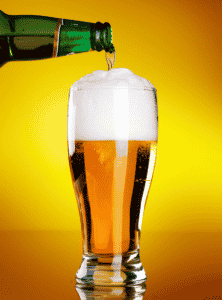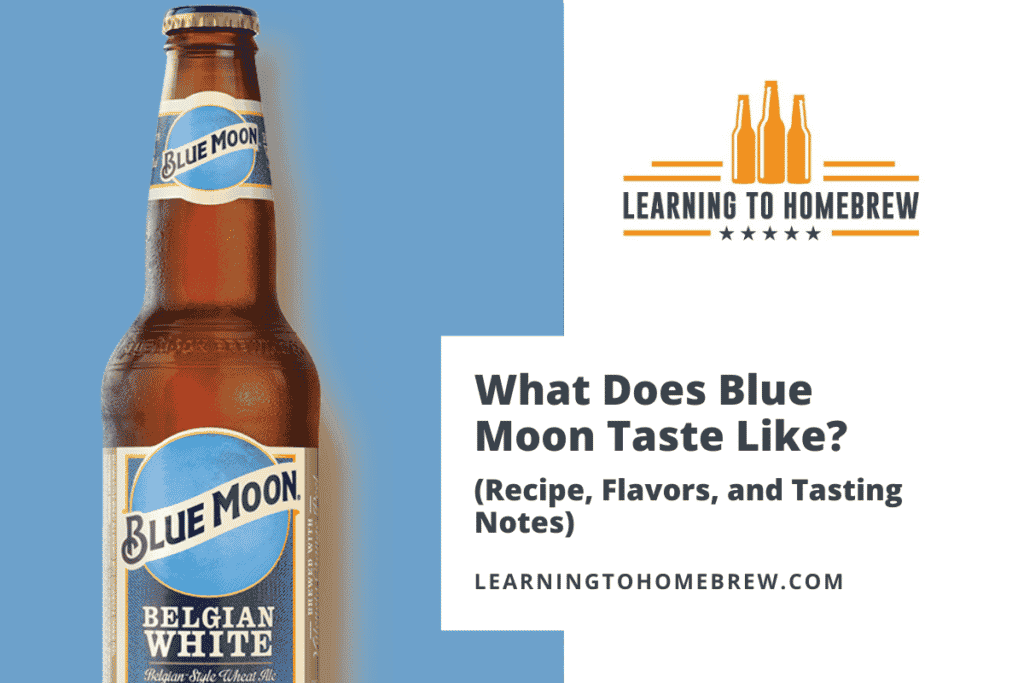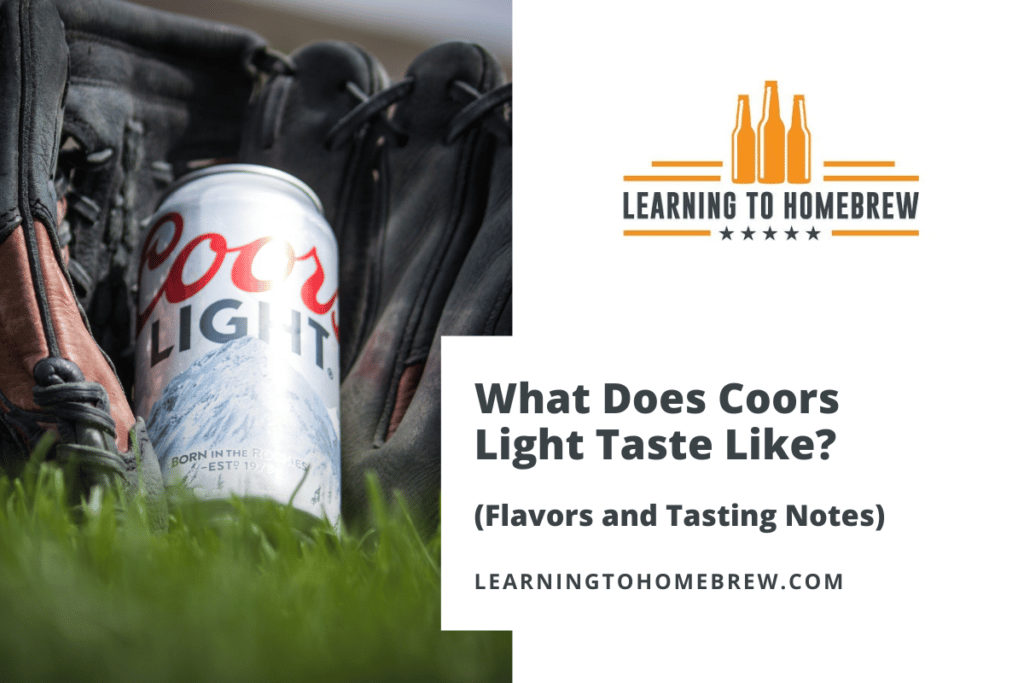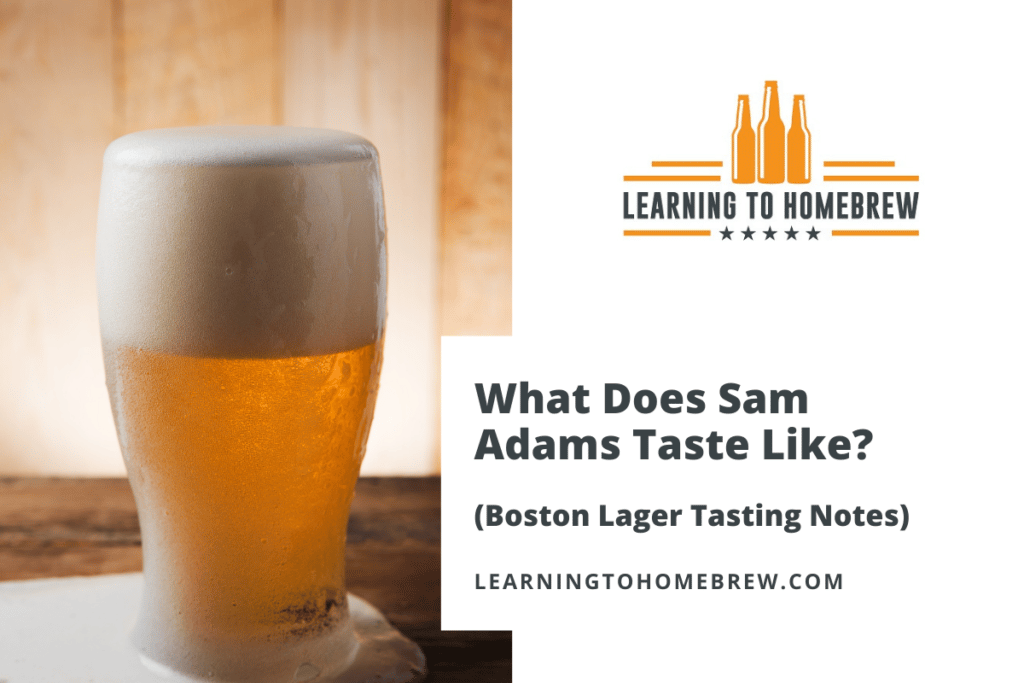Heineken is one of the most recognized brands on the planet. Brewed in the Netherlands since 1873, it enjoys worldwide popularity thanks to its marketing strategies and distinctive green bottle with the red star on the label. But, what does Heineken taste like?
Heineken is a high-quality European pale lager made from 100% natural ingredients. There are only three ingredients in this beer: barley, hops, and water. Overall it has a bitter, sweet taste with biscuity malt flavor and a hint of sweet corn and green apple, which make it intriguing. From the bottle, it sometimes has a distinctly skunky flavor.
Read on to discover more about Heineken’s flavors, what you can pair it with, and how best to drink it. If you want to re-create a similar beer at home, then follow the included clone recipe.
Topics We Cover
Tasting notes and flavors for Heineken
Heineken has all the characteristics of a European pale lager. It’s a highly carbonated beer with a clear straw color and a moderate off-white head.
A malty cereal and fruity yeast base compliment the hop bitterness. It is the taste that follows the nose in this beer.
Learn more about the specific tasting notes for Heineken below.
Taste
Heineken tastes best out of a can. It does not have the typical skunky, lightstruck taste typical of the bottled version.
The malty sweetness and biscuity notes (which some have compared to sweet corn) are followed by subtle, fruity, citrusy notes.
It leaves a crisp and clean finish with a slight bitter hop aftertaste that disappears quickly.
Aroma
After pouring, the first notes are the biscuity malts found in most lagers. A hint of ripe sweet corn then appears in the middle. There are also some subtle fruity notes reminiscent of green apples. The finish is a faint smell of fresh-cut grass provided by the hops.
It often smells a bit skunky too, if poured from a bottle.
Appearance
Heineken pours very clear with a light golden color.
It’s highly carbonated with a foamy ivory head that quickly evaporates into a thin layer of tiny bubbles with very little lacing.
Mouthfeel
Heineken has a tingly, highly carbonated light to medium body.
There is a distinct sweetness from the malt, which is nicely balanced with a crisp, clean finish. The aftertaste is slightly hoppy, but it doesn’t linger.
Heineken recipe and ingredients
Heineken has only used three ingredients to produce its flagship beer for the last 148 years.
Barley malt, hops, and water are the only ingredients. Yeast is used as part of the brewing process, but it is filtered out after fermentation. Heineken still uses a yeast known as Heineken “A yeast” that was developed for the original beer.
Heineken’s yeast was developed in 1886 by Dr. Hartog Elion. Heineken is 100% natural with no additives and uses only non-GMO ingredients.
Although the Heineken recipe is a trade secret, it is possible to brew a similarly flavored lager at home.
This clone recipe is for 6 gallons of finished lager, which tastes similar to the Heineken brand.
Ingredients:
- 10 lbs. German pilsner malt
- 0.25 lbs. Crystal malt
- 0.42 oz. Northern Brewer hops
- 0.72 oz. Hallertau Hersbrucker starter hops
- 0.28 oz. Hallertau Hersbrucker finishing hops
- Fermentis – Saflager German Lager Yeast S-23
Brewing Instructions:
- Heat 3.4 gallons of water to 150°F.
- Add all your grains and starter hops.
- Mash for 90 minutes at 150°F.
- Sparge with water and reach about 6 gallons of wort.
- Bring wort to a boil and boil for 90 minutes.
- In the last 10 minutes, add finishing hops.
- Turn off the heat and transfer the wort to the primary fermenter.
- Pitch and add yeast.
- Ferment in primary at 50°F.
- Rack to secondary and ferment at 50°F for anywhere between 5 to 12 weeks, up to personal preference.
- Bottle and carbonate your peer for at least 2 weeks, perform samples and find the right carbonating time for your own preferences.
Heineken Style
Heineken is a European-style Pale Lager. These beers are light-colored, refreshing, and easy to drink, much like a German pilsner. They are generally made with a lot of barley malt and a few noble hops.
They are also usually bottom fermented with clear lager yeast. European pale lagers are straw-colored with only a slight hoppy bitterness.
Other popular European pale lager-style beers are:
- Grolsch Premium Lager
- Stella Artois
- Martens Pilsner
- Harp Lager
- Kronenbourg 1664
- Samuel Smith Pure Brewed Lager
Heineken ABV
Heineken, and most European Pale Lagers, are 5% ABV.
This is slightly stronger than an average beer.
Heineken calories and nutritional information
Nutritional information for Heineken is similar to other beers of its style.
Heineken nutrition information:
- Calories: 142
- Carbs: 11g
- Fat: 0g
- Protein: 2g
Like most beers, it contains carbohydrates, calories, and a little protein with few other nutrients. The carbohydrates and protein in Heineken come from the grain used to produce the beer.
How to drink Heineken for the best flavor
Heineken is at peak flavor when drank around 42.5°F on draft or from a can. It should be poured into a tall pilsner glass to develop its aroma and flavor profile.
Temperature
There is much debate on the proper drinking temperature for beer. It depends on the style of beer, and of course individual taste.
The most commonly recommended temperature for beers like Heineken is between 42.5°F and 48°F, or around 6°C. Drinking beer at the correct temperature balances out the sweetness of the malt and the bitterness of the roast and hops.
Drinking your beer too cold numbs the palate so you can’t detect the nuances in the beer. Colder beer also releases less carbonation, which reduces the aroma.
Bottle, can, or draft?
Many people have a preference between bottle, can, or draft. Bottles, cans, and draft beer can have different flavors due to packaging and how they are handled during brewing, transportation, and storage.
The two best ways to drink Heineken are on draft from a keg, or from a can that has been poured into a glass. The best flavor comes from the least exposure to sunlight.
Skunky aroma and taste aren’t always desired, even though it’s come to be expected from some European lagers bottled in green or clear bottles. The best way to avoid it is to drink it on draft or from a can.
Why does Heineken taste better in a can?
Beer and sunlight do not play well together. Many European lagers that are packaged in green bottles have the tell-tale skunky flavor to them.
The reason Heineken tastes better in a can is that it hasn’t been exposed to sunlight. Sunlight causes a chemical reaction with the bitter hop compounds in beer that produces 3-methylbut-2-butene-1-thiol or MBT. This is the compound that makes beer taste skunky.
When this happens, the beer is called lightstruck. Clear and green bottles provide the least protection from lightstruck beer. Less than 30 minutes of exposure to sunlight can be enough to make a beer taste skunky.
Type of glass
An important component to the taste experience is the glass. The right serving glass can accentuate certain characteristics and improve your tasting experience.

Heineken and other European Pale Lagers are best served in pilsner glasses. These are tall, tapered glasses with a flat, narrow base. They showcase color and carbonation. The wider top also helps develop the flavor profile and aroma while maintaining the head.
The European version of the pilsner glass has a short stem instead of a flat bottom.
What kind of foods pair best with Heineken
The consensus among drinkers is that Heineken is a bland lager, it’s great for a backyard BBQ on a hot summer day.
It also goes well with a good, hearty pizza on game day. Cheese pairings such as Edam, Havarti, mild Cheddar, and Swiss are also suggested. Salads, light seafood entrees, and spicy Indian and Mexican foods are also suggested.
Is Heineken a good beer to drink?
Heineken is pretty light on flavor as imports go. It can also have an unpleasant skunky flavor out of the bottle, so remember to try it on draft or out of the can.
If you’re out of college it’s still a decent beer to knock back a few rounds with your uncle in your backyard lawn chairs. It’s also great when you want something cold and refreshing after mowing the lawn.
If you’re looking for a complex beer with a lot of flavors, Heineken isn’t it. You’ll need to keep looking. Overall, it’s not bad if you’re looking for something with a bubbly, crisp, and clean flavor.
For the web story version of this article click here!





